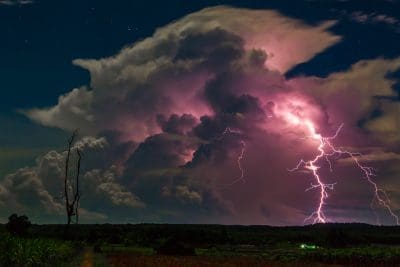La Niña has weakened in the tropical Pacific Ocean and is likely near its end, the Bureau of Meteorology is reporting today.
 Ocean indicators of La Niña have returned to neutral levels, while atmospheric indicators that remain at La Niña levels have started to weaken.
Ocean indicators of La Niña have returned to neutral levels, while atmospheric indicators that remain at La Niña levels have started to weaken.
All but one of the surveyed international climate models suggest sea surface temperatures in the tropical Pacific (including NINO3.4) will remain neutral (neither El Niño nor La Niña) through autumn; one model is neutral in March and April but touches on El Niño thresholds in May. ENSO outlooks extending beyond autumn should be viewed with caution as models typically have lower forecast accuracy at this time of year.
The Madden–Julian Oscillation (MJO) is forecast to strengthen over the western Pacific at the start of March and then move to the central then eastern Pacific over the coming fortnight. This may contribute to monsoonal and cloudy conditions over far northern Australia over the coming week, but drier conditions are expected as the MJO moves further east. Westerly wind anomalies associated with the MJO may also weaken the trade winds in the tropical Pacific, contributing to the further breakdown of La Niña.
The Southern Annular Mode (SAM) index is currently positive, but is expected to return to neutral values over the coming weeks.
Warmer than average sea surface temperatures persist around south-east Australia, New Zealand and the west coast of Australia, but have returned to close to average temperatures in waters to Australia’s north.
Climate change continues to influence Australian and global climates. Australia’s climate has warmed by around 1.47 °C over the period 1910–2021. There has also been a trend towards a greater proportion of rainfall from high intensity short duration rainfall events, especially across northern Australia. Southern Australia has seen a reduction of 10 to 20% in cool season (April–October) rainfall in recent decades.
Source: BOM

A 1.47 degree increase in temperature over 110 years, influenced by ‘climate change’. Technically that is correct, but the BOM has got to stop putting out this type of press release/report. Using the term ‘climate change’ invokes thoughts of the contribution of man-made climate change being the only cause for the temperature increase. This is in the territory of ‘truth in reporting’. Obviously, industries contribute, and the truth is certain Asian and other nations industries dwarf that of Australian industries. Nevertheless, it is truthful to say that globally, most industry is at fault and must proportionally clean up their respective acts. That aside, it is therefore monotonously untruthful to talk about climate change without qualifying that part of the change is evolutionary, as in the natural progression over which humans have no control, and that some part of the 1.47 degrees would have happened anyway. The quantum of this ‘part’ is scientifically disputed, but that should not deflect from the core issue of reporting ALL the facts, and not using generalisations. There is also the secondary issue in respect of the BOM. It has been reported that the BOM revised historical temperature records on three occasions, each time producing higher temperatures than previously recorded, the justification for which was the lower efficiency of the older equipment, as compared to current technology. This begs the questions; was this conclusion drawn from setting up a model of the old equipment beside the latest equipment, in a controlled environment? If so, how accurately does that represent the environmental conditions in the immediate area of the measuring equipment in our hottest locations 50 or 100 years ago? I saw several western and northern measuring stations in the 1960’s, where the isolation rules were met but the positioning and shade footprints of nearby buildings would have contributed to a lower reading at certain times, rendering an even lower theoretical revision questionable. I think that the best that can be said about revising historical temperature records is that it is undoubtedly well intentioned.